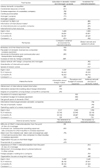Abstract
The purpose of this study was to analyze the effect of push, pull and push-pull interactive factors for CFMC (Contract Foodservice Management Company)'s internationalization. The study was a quantitative study part in mixed methods (QUAL → quan) which was mainly qualitative study and quantitative study. Mail survey was carried out for quantitative study. For study subjects, 1,281 persons who completed 'Food Service Management Professional Program' of 'Y' University were selected as a population because the program was mainly for CFMC's workers. The analysis methods used in this study were frequency analysis, factor analysis, correlation analysis and multiple regression analysis with SPSS 17.0. Push factors had the saturation in domestic market and the manager's purpose (fac.1) and the investment for internationalization (fac.2). Pull factors had the company's external environment for internationalization (fac.3) and the global network and spread of culture (fac.4). Push-pull interactive factors had the information about foreign market (fac.5), the procedure and budget of overseas expansion (fac.6) and the national network and size of domestic market (fac.7). Internal dynamics factors had the deterrents for internationalization (fac.8) and the enablers for internationalization (fac.9). The result showed that the company's external environment in pull factors had positive effects on the deterrents for internationalization. The global network and the spread of culture had positive effects on the enablers for internationalization. The information about foreign market in push-pull interactive factors had positive effects on the deterrents and enablers for internationalization. The national network and the size of domestic market had positive effects on the enablers for internationalization. The deterrents and enablers for internationalization had positive effects on the level of internationalization, and the deterrents had more effects on the level of internationalization than the enablers did (β= .492 > .177).
Figures and Tables
Table 3
Correlation analysis of factors for CFMC's internationalization

*: p < .05, **: p < .001
fac1: Saturation in domestic market and Manager's purpose fac2: Investment for internationalization
fac3: Company's external environment for internationalization fac4: Global network and spread of culture
fac5: Information about foreign market fac6: Procedure and budget of overseas expansion
fac7: National network and size of domestic market fac8: The deterrents for internationalization
fac9: The enablers for internationalization fac10: Internationalization level
References
1. Korea Foodservice Information. A Korean food service yearbook. 2009. 151.
2. Korea Foodservice Information. Available from:http://www.foodbank.co.kr.
3. Yang IS, Lee JM. The present situation and prospect of contract food service management companies. Food Industry & Nutrition. 1997. 2(2):1–3.
4. Park ME. A Study on the Cost Structure of Foodservice Center in Institutions. Korean J Culinary Res. 2005. 11(3):151–165.
5. In : Han KS, Yang IS, editors. A proposal for re-takeoff of Korean contract food service management industry. 2004. The academic seminar of the food service industry with academic and industrial cooperation; 61–62.
6. Korea trade-investment promotion agency (KOTRA). 2007/2008 Directory of Korean companies in overseas expansion. 2008.
7. The export-import bank of Korea. Available from:http:www.koreaexim.go.kr.
8. The Korean chamber of commerce in Shanghai. Available from:http:www.kochamsh.com.
9. Bae JW, Bae JT. Internationalization Processes and Strategies of High-Tech Venture Firms: The Case of Korean Ventures in the IT Industry. Korean J Venture Business Studies. 2003. 6(1):45–46.
10. Johanson , Wiedersheim-Paul . The Internationalization of the Firm-Four Swedish Cases. J Manage Stud. 1975. 12(3):305–322.
11. Welch L, Wiedersheim-Paul F. Export Promotion Policy-a new approach. Aust J Manage. 1979. 4(2):165–178.

12. Johanson Vahlne. The Internationalization Process of the Firm: A Model of Knowledge Development and Increasing Foreign Market Commitment. J Int Bus Stud. 1977. 4:20–29.
13. Wortzel L, Wortzel H. Export Marketing Strategies for NIC and LDC-based Firms. International Executive. 1982. 24(1):18–19.
14. Hwang JS. The theory of environment for international enterprises. 1994. Mungyeong press.
15. Greiner L. Evolution and Revolution as Organization Grow. Harvard Business Review. 1998. 76(3):55–68.
16. William H, Richard H. Key Decision in International Marketing: Introducing New Products Abroad. Columbia J World Bus. 1997. 12(4):15–23.
17. Bilkey W. Export Marketing Practices and Export Profitability. Research in Marketing. 1984. 7:211–236.
18. Root R. Entry Strategies for International Markets. 1987. Lexington Books.
19. Terpstra V Russow. International Dimensions of Marketing 4E. 2000. South-Western College Publishing.
20. Etemad H. Internationalization of small and Medium-sized Enterprise: A Grounded Theoretical Framework and an overview. Can J Adm Sci. 2004. 21(1):1–21.

21. Yip G. Total Global Strategy. 1992.
22. Lee SH. Global Marketing. 2004. Daemyeong.
23. Jang SJ. Management Strategies. 2008. Pakyoungsa.
24. Kang TG. An Empirical Study on the Internationalization Process of Korean Firms: Theory and Evidence. Korean J International Management. 2001. 12(2):1–29.
25. Lieverman M, Montgomery D. First-mover (dis)advantages: Retrospective and link with the resource-based view. Strateg Manage J. 1998. 19:1111–1125.

26. Lee JH. A Field Study on the Internationalization Strategy Of Korean Corporates. 1999. Seoul: Konkuk University;[Ph.D's thesis].
27. Czinkota M, George T. Export management: An International context. 1982. New York: Praege publishers.
28. Reid S. The Decision-Marker and Export Entry and Expansion. J Int Bus Stud. 1981. 12(2):101–112.
29. Jo DS. International business for the 21st century. 2007. Seoul economy administration.
30. The support project team for enterprises' internationalization. Long-term vision and strategies for internationalization of enterprises in the 21st century. 1994.
31. Heo YD, Gang JY. Measurement for the level of enterprises' internationalization by stages. 1997. Jipmundang.




 PDF
PDF ePub
ePub Citation
Citation Print
Print






 XML Download
XML Download